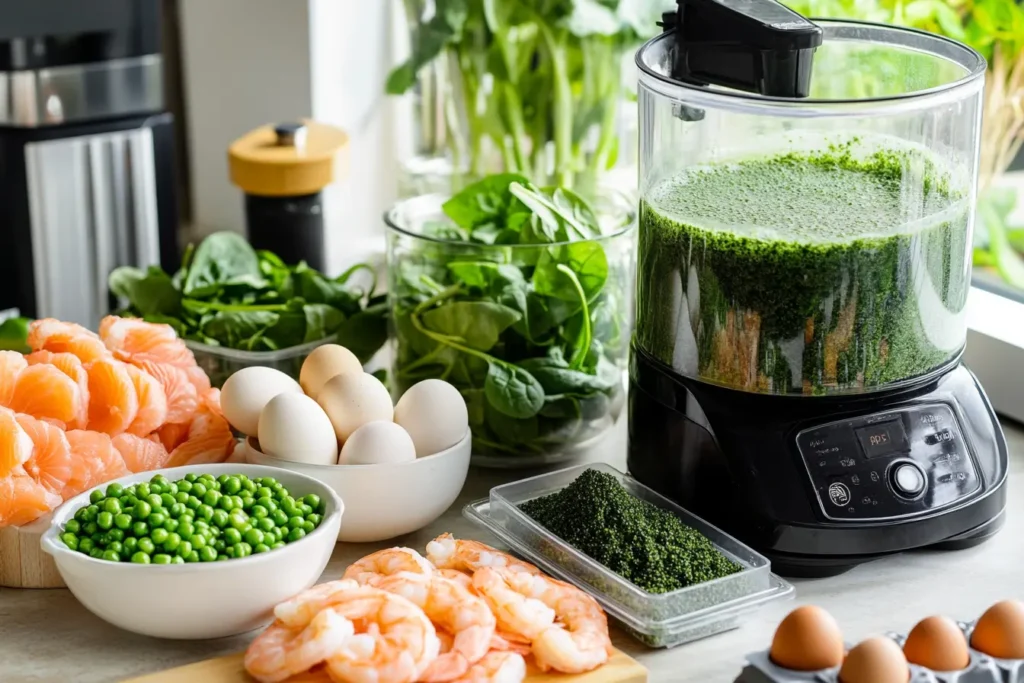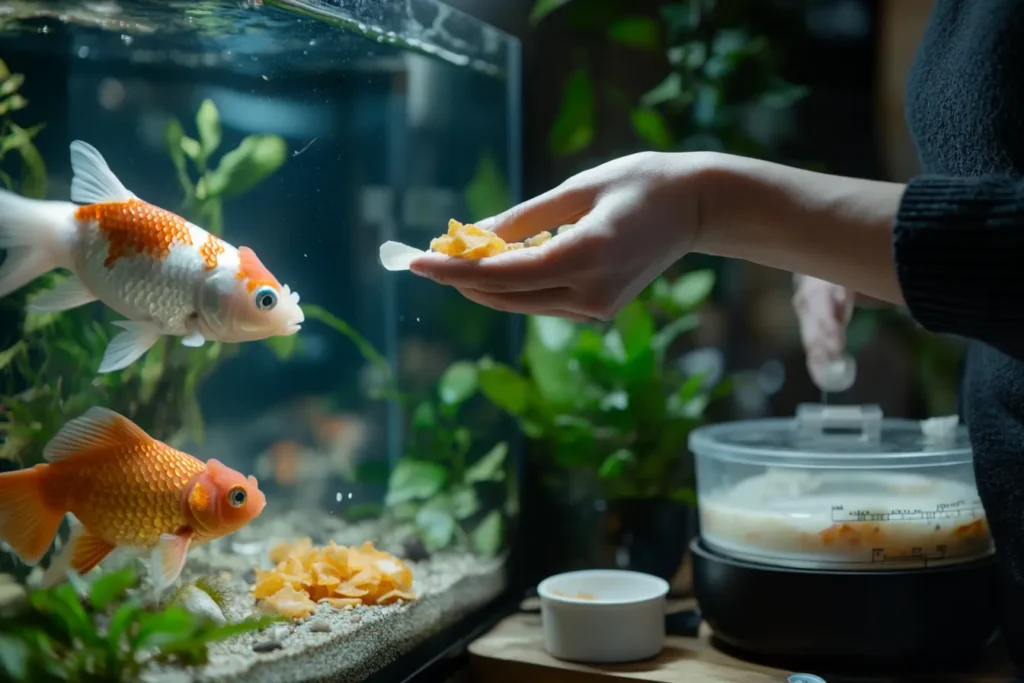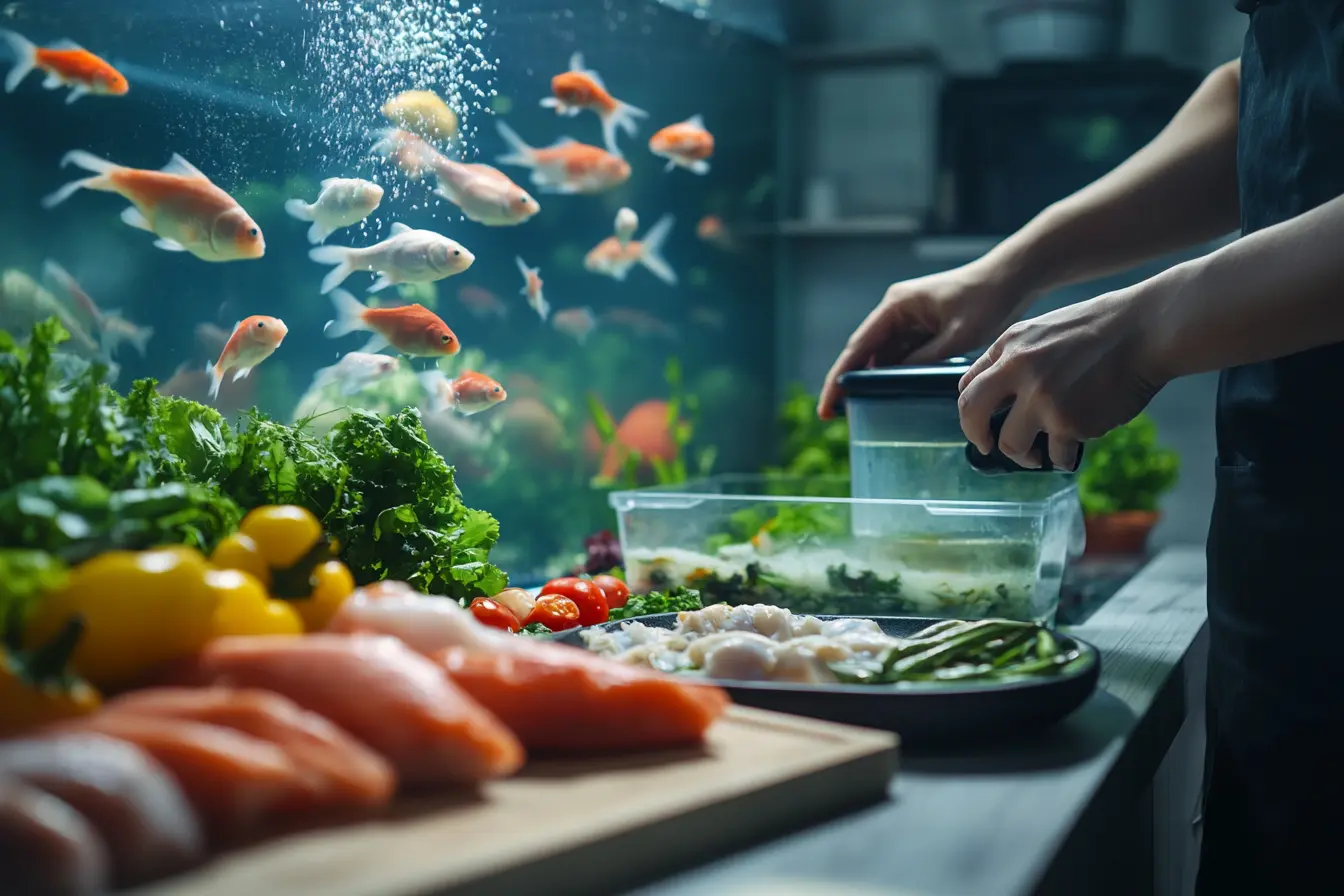Crafting your own homemade fish food recipe is a fantastic way to ensure your aquarium fish receive the freshest, healthiest diet tailored to their specific needs. Not only does it give you complete control over the quality and source of ingredients, but it also supports a more sustainable and cost-effective approach to fishkeeping. By creating a homemade fish food recipe, you can incorporate a variety of nutrients that promote vibrant colors, robust health, and active behavior in your aquatic pets. With just a bit of time and effort, you can prepare a balanced and nutritious diet that enhances your fish’s well-being while maintaining a thriving, beautiful aquarium.
Table of Contents
Why You Should Make Your Own Fish Food
Feeding your fish doesn’t have to mean relying on store-bought jars of pellets or flakes. Making your own homemade fish food recipe is not only fun and easy—it’s also incredibly beneficial for your aquarium! Here’s why many aquarists are switching to DIY fish food.
Complete Nutrition, Tailored to Your Fish
Every fish species has unique dietary needs based on their habits and natural environment. A homemade fish food recipe allows you to customize ingredients to suit your fish perfectly, ensuring a balanced diet. Whether you have vibrant tropical fish, hearty goldfish, or omnivorous swimmers, these recipes provide the right nutrients to help your fish thrive and stay happy.
Fresh, High-Quality Ingredients in DIY Fish Food
Say goodbye to mystery ingredients in commercial fish food! When you prepare a homemade fish food recipe, you know exactly what goes into your fish’s diet. Fresh vegetables like spinach, peas, or zucchini, protein-rich seafood like shrimp or fish fillets, and eco-friendly options like spirulina or algae are excellent choices. These wholesome ingredients not only improve your fish’s health but also enhance their vibrant colors and energy levels.
Cost-Effective and Eco-Friendly DIY Fish Food Options
Did you know that making a homemade fish food recipe can save you money? By using sustainable ingredients or repurposing leftovers, you can create bulk fish food at a fraction of the cost of store-bought options. This approach is not only budget-friendly but also environmentally conscious, making it a win-win for your wallet and the planet.
Creating your own homemade fish food recipe doesn’t just benefit your fish—it’s also a rewarding part of aquarium care. Taking the time to prepare food for your aquatic pets strengthens your connection with them and ensures they’re getting the best possible diet. Plus, it’s a fun and fulfilling hobby for any fishkeeper!
Step-by-Step Guide to Making Your Own Fish Food

Gathering Your Ingredients
Before you start crafting your homemade fish food recipe, it’s essential to gather all the necessary ingredients. Begin with fresh vegetables like spinach, peas, or zucchini, as they provide vital nutrients and fiber for your fish. Next, include high-protein ingredients such as shrimp, fish fillets, or even boiled egg yolks to support energy and growth. Don’t forget to add superfoods like spirulina powder or algae, which are packed with vitamins and minerals to enhance vibrant colors and strong health. By combining these wholesome ingredients, you’re laying the foundation for a well-balanced homemade fish food recipe that’s perfect for your aquatic pets!
Blending and Preparing
Once you’ve gathered your ingredients, it’s time to prepare your homemade fish food recipe. Start by chopping the vegetables and proteins into smaller pieces to make them easier to mix. Blend these ingredients together in a food processor with a small amount of water to create a smooth paste. If you prefer a gel-based food option, mix in unflavored gelatin to bind the ingredients. After combining everything, spread the mixture thinly onto baking sheets or pour it into ice cube trays—both methods make feeding your fish simple and convenient later on. Once frozen or baked, your homemade fish food recipe is ready to use, and your fish will love every bite!
Tips for Storing and Feeding
Keeping It Fresh
Proper storage is crucial to ensure your homemade fish food recipe stays fresh and safe for your fish. Freeze individual portions to keep the food fresh for weeks or even months. When it’s time to feed, simply break off a small piece or defrost a cube to avoid waste. Always check for signs of spoilage, as spoiled food can harm your fish. By following these steps, your homemade fish food recipe will remain nutritious and safe for your aquatic pets over time.
Feeding Techniques
To maximize the benefits of your homemade fish food recipe, it’s important to feed your fish the right way. Start with small portions to ensure your fish eat everything without overfeeding, which can cloud the tank water. Observe how your fish respond to the new food—they’ll likely become more active and enthusiastic during feeding time! For a complete and varied diet, rotate your DIY fish food with other options, ensuring your fish stay happy, healthy, and thriving.
Troubleshooting and Common Questions

Addressing Feeding Challenges
Feeding your fish a homemade fish food recipe may require some trial and error, but don’t let that discourage you! If your fish seem hesitant to try the new food, start by reducing the portion size and mixing it with their regular food. This gradual transition will help them get used to the taste and texture of the homemade fish food recipe. Over time, your fish will likely warm up to the new diet. Additionally, make sure the food size is appropriate for your fish species—chop or blend it finer if necessary to ensure it’s easy for them to eat.
Signs of a Healthy Diet
A well-prepared homemade fish food recipe can lead to vibrant, active fish and clear tank water. Look for signs of good health, such as bright, vivid colors, increased energy, and regular eating habits. If your fish appear lethargic, show a lack of appetite, or seem uninterested in the food, it may be time to revisit your recipe or adjust your feeding routine. Remember, consistency and balance are key to long-term success with any homemade fish food recipe.
While you’re working on crafting homemade fish food, you can also explore other delicious recipes on our site, like the Crab Brûlée Recipe, perfect for seafood lovers.
Why Try a DIY Fish Food Recipe?
Benefits of Homemade Fish Food
Making your own fish food recipe is not only economical but also allows you to choose wholesome, fresh ingredients tailored to your fish’s specific needs. This way, you can avoid unnecessary additives, ensuring a healthier and more natural option for your aquatic pets. Beyond nutrition, the process is also rewarding, as you get to play an active role in enhancing your fish’s quality of life.
What’s Next?
Now that you’re equipped with all the knowledge to prepare the perfect homemade fish food recipe, it’s time to get started! Experiment with ingredients, keep an eye on how your fish respond, and adjust as needed. Creating your own fish food is a fun and fulfilling project that both you and your fish will enjoy. For more exciting ideas and culinary inspiration, why not browse our extensive collection of recipes on Fest Recipes? Happy feeding!
Common Mistakes to Avoid When Making Fish Food
Overlooking Nutritional Balance
When making fish food, remember that different fish species have different needs. Without the right mix of proteins, fats, and nutrients, your fish might not do well. For example, plant-based ingredients are best for herbivores, while carnivores need protein-rich options. To avoid this mistake, research your fish species and adjust your recipe. Watch their health and behavior to make sure they benefit from the homemade food.
Using Improper Ingredients
Using harmful ingredients is another common mistake. Some grains and processed foods can upset digestion or pollute the water. Unwashed produce or contaminated items may bring bacteria into the tank. To keep your fish safe, use fresh, high-quality ingredients and handle them carefully. Also, avoid overfeeding, as leftover food can cloud the water and harm the tank’s balance.
Frequently Asked Questions (FAQs)
How Often Should I Feed My Fish?
Feeding depends on your fish species and their natural diet. A simple rule is to feed small portions once or twice daily. Make sure they eat everything within a few minutes. If using homemade fish food, watch how your fish respond and adjust as needed to avoid overfeeding.
How Do I Store Homemade Fish Food?
Proper storage keeps your homemade fish food fresh. Depending on the recipe, refrigerate or freeze portions to make them last longer. Use airtight containers to prevent spoilage and maintain quality. Always label and date your food to keep track of when to use it.
Can I Customize Ingredients for My Fish?
Yes! This is a major benefit of making your own fish food. You can tailor the ingredients to meet your fish’s needs. Avoid harmful components and include a balanced mix of nutrients. This ensures your fish stay healthy and well-fed.
What is the Best Homemade Food for Fish?
The best homemade food for fish depends on their species. Herbivorous fish thrive on a mix of vegetables like spinach, peas, and zucchini, while carnivorous fish prefer protein-rich options like shrimp, fish fillets, and worms. A balanced diet tailored to your fish’s needs ensures optimal health.
How Do You Make Homemade Fish Feed?
To make homemade fish feed, blend ingredients like fresh vegetables, protein sources (shrimp or fish), and binding agents such as gelatin. Shape the mixture into pellets or sheets, then freeze or dry them for easy storage.
What Are the Best Ingredients for Fish Food?
High-quality ingredients like spinach, peas, carrots, shrimp, fish, and spirulina are excellent for homemade fish food. Add vitamins and minerals to ensure your fish receive a balanced diet.
How Can You Make Live Food for Fish?
Live food such as brine shrimp, daphnia, or microworms can be cultivated at home. Set up a controlled environment using tanks or containers with proper water conditions, and feed them nutrients to grow. This provides a fresh, nutrient-packed option for your fish.

